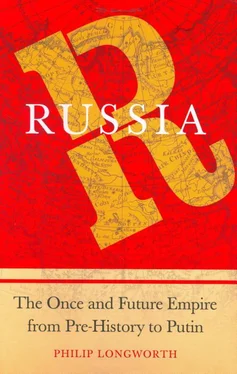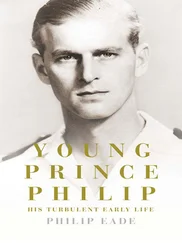The raid of 860 was the first known encounter between Constantinople and the Rus. We do not know precisely who organized it and how, but a book written by the emperor Constantine VII nearly a century later provides evidence about a Rus trading expedition. His account, intended as a brief for his heir, vividly describes the preparations required and the perils of the route. The essential vessel for the enterprise was a dugout ship (monolyxa in Greek) fashioned out of a tree trunk. The trees would have been cut in the forest zone of central Russia during the preceding winter, then dried out and launched into the lakes which ran into the river Dnieper when the ice melted. They would then be ribbed, widened with side-planks, and taken down to Kiev to be sold to the expedition’s organizers, who saw to their fitting out with rowlocks, oars and tackle. In June they would have moved off from Kiev to a gathering point downsteam. Then, when all the boats and men were ready, the expedition set out.
Danger threatened almost at once, at the first of the infamous Dnieper rapids, a defile as narrow, Constantine tells us, ‘as the polo ground’ in Constantinople, full of high rocks. ‘Against these… comes the water and wells up and dashes over the other side, with a mighty and terrific din.’ Here there was no alternative but to put into the shore and disembark most of the men with their slaves in their chains. The remaining men then negotiated the rapids, some with punt-poles, while others, ranged round each boat, felt for hidden rocks with their bare feet, and walked the vessel through. Having negotiated this set of rapids, six more had to be negotiated. The third set was so dangerous that the boats had to be taken out of the water entirely and dragged or carried a distance of 6 miles overland. The fourth set had to be skirted in a similar manner. And from this point the expedition had to watch out for raiding parties from the fierce Pecheneg people, who would come in from the steppe on the prowl for booty.
The most dangerous point of all was a wide ford used by merchants of Kherson to access a river island with a huge oak tree. This was the Pechenegs’ favourite ambush point. So, on reaching the island, members of the expedition would leave food to propitiate their gods and kill some cocks as sacrifices. Four days later they would have reached an island in the Black Sea where they would fit out the boats with the masts, sails, ropes and tackle they had brought with them, for from that point on sail-power could supplement rowing. 3Now at last they were ready.
The great Rus — Viking raid on Constantinople in 860 was a masterpiece of the genre. Two hundred boats and up to 8,000 men took part. They struck with savagery as well as in force, and they achieved complete surprise. ‘The unexpectedness of the attack,’ wrote a distinguished eyewitness, ‘its strange swiftness, the inhumanity of the barbarous tribe, the harshness of its manners and the savagery of its character proclaim the blow to have been discharged like a thunderbolt from God.’ The civilized inhabitants of the city were pious Christians, and so they saw the Viking attack as a punishment for their sins. And it was shaming as well as surprising to have been hurt by unknowns — by ‘an obscure people, a people of no account, a people ranked as slaves’. 4In this way, the Rus leaped to the front of the political stage and into the history books. Then they disappeared from it just as suddenly as they had arrived.
Recovering from the surprise, the government took action to forestall any similar attempt. Imperial diplomats were dispatched to the Khazars. Presumably it was assumed that these Rus were subject to them. It is not clear if this was the case or not, though Vikings did contract themselves out as mercenaries as well as trading and plundering on their own account. Nor do we know if Khazar intervention had anything to do with it but in 882, nine years after Riurik’s death, his grandson, Oleg, gathered and took his war bands south against Askold and Dir and killed the two ‘renegades’, as they were to be called henceforth. 5We cannot be sure that these ‘renegades’ were the same people as those who had taken possession of Kiev in 858, but we can infer that the victory of 882 secured Oleg effective control of the entire commercial network from the Baltic to the Black Sea, and since he now had access to Kiev, over which the Khazars still claimed sovereignty, he was able to operate over much more extensive territory than formerly, collecting honey, furs and slaves to trade with Constantinople, albeit under Khazar tutelage.
From the later 800s Rus were selling furs, especially black fox and beaver, swords and slaves to distant Baghdad. Using the Volga route to the Caspian Sea, they negotiated their way past the Khazar customs posts or else traded their merchandise there for resale to the realm of the Caliph. They brought back beads and oriental cloths, double-headed axes, buttons, and coins — chiefly dirhams, the currency of the caliphs of Baghdad, which Russian merchants, lacking a coinage of their own, were to adopt. Over the next fifty years or so shortage of labour and a surplus of cash generated a steady demand for slaves, especially female slaves, from both the Caliphate and the Byzantine Empire, which the Rus were happy to meet. They were not alone however. Chains and neck shackles have been found in archaeological digs along all the more important Mediterranean and European routes. Not only Constantinople but papal Rome had a thriving slave market, and Spain was a major supplier as well as Rus. 6
Then the Russians fell out with the Khazars who claimed lordship over them. Constantinople sided with the Khazars, but when Oleg led a suc-cesful Rus’ assault on the city in 907 it thought again. The upshot was an agreement of 911, by which the Emperor agreed to pay a money tribute both to those Rus who took part in the expedition and to the princes who had sent them. Oleg also obtained permission for Rus merchants to stay for up to six months at a house, or fondaco, set aside for them at the St Mamas quarter of Constantinople, and won agreement that they would be fed at the imperial expense when they visited the city. Yet the Khazars, who had married into the local Rus elite, still reigned as kagans of Kievan Rus, and they were to keep control of Kiev itself till about 930. 7
The exact nature of Oleg’s relationship with them in this period is not yet clear. He may have been their partner or their tributary, but whatever the relationship it must have been tense. And so long as the situation held it seems that many unfortunate tribesmen had to pay tribute both to the Rus and to the Khazars. Eventually, however, Oleg’s son Igor was to displace his former overlords and rule Kiev as kagan.
Igor proved to be no less rapacious than his forebears and predecessors. In 914 he decided to increase the tribute he demanded of the Rus tribes known as Derevlians. Thirty years later he raised it again — only this time the Derevlians resisted. As Russia’s first chronicle recalled, Igor
attacked the Derevlians in search of tribute, and to the old tribute he added a new tribute and collected it by violence from the people… On his way home… he said to his followers, ‘Take the tribute home. I shall turn back and collect more.’… Hearing of his return the Derevlians consulted with Mal, their prince, saying ‘If a wolf comes among sheep it will take the whole flock one by one, unless it is killed… If we do not kill [Igor] now, he will destroy us all. 8
And so they killed him.
But the Derevlians had not reckoned with Igor’s widow, Olga. Prince Mal offered to marry her, but Olga refused, determined to take personal charge, to rule on behalf of Sviatoslav her baby son, and to take vengeance on the Derevlians. A call went out to her warriors, and they were soon moving against Mal’s stronghold, Ikorosan, about 100 miles upstream from Kiev. They burned the place and rounded up the Derevlian leaders. The vengeance Olga exacted was a model of how to discourage resistance. She had some of them tortured, slaughtered many, and enslaved the rest.
Читать дальше





![Stephan Orth - Behind Putin's Curtain - Friendships and Misadventures Inside Russia [aka Couchsurfing in Russia]](/books/415210/stephan-orth-behind-putin-s-curtain-friendships-a-thumb.webp)





